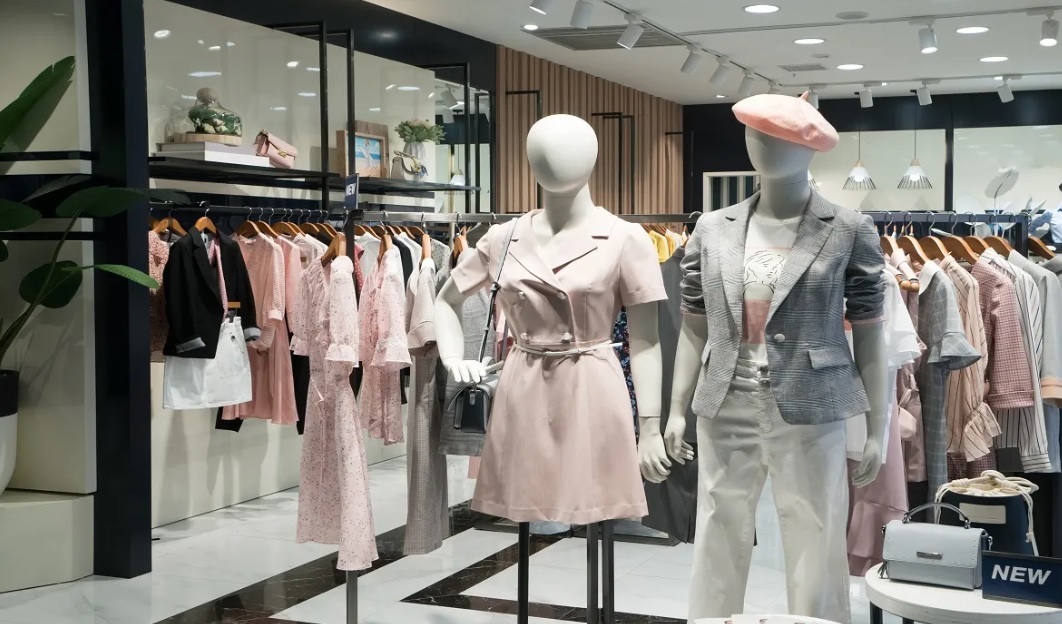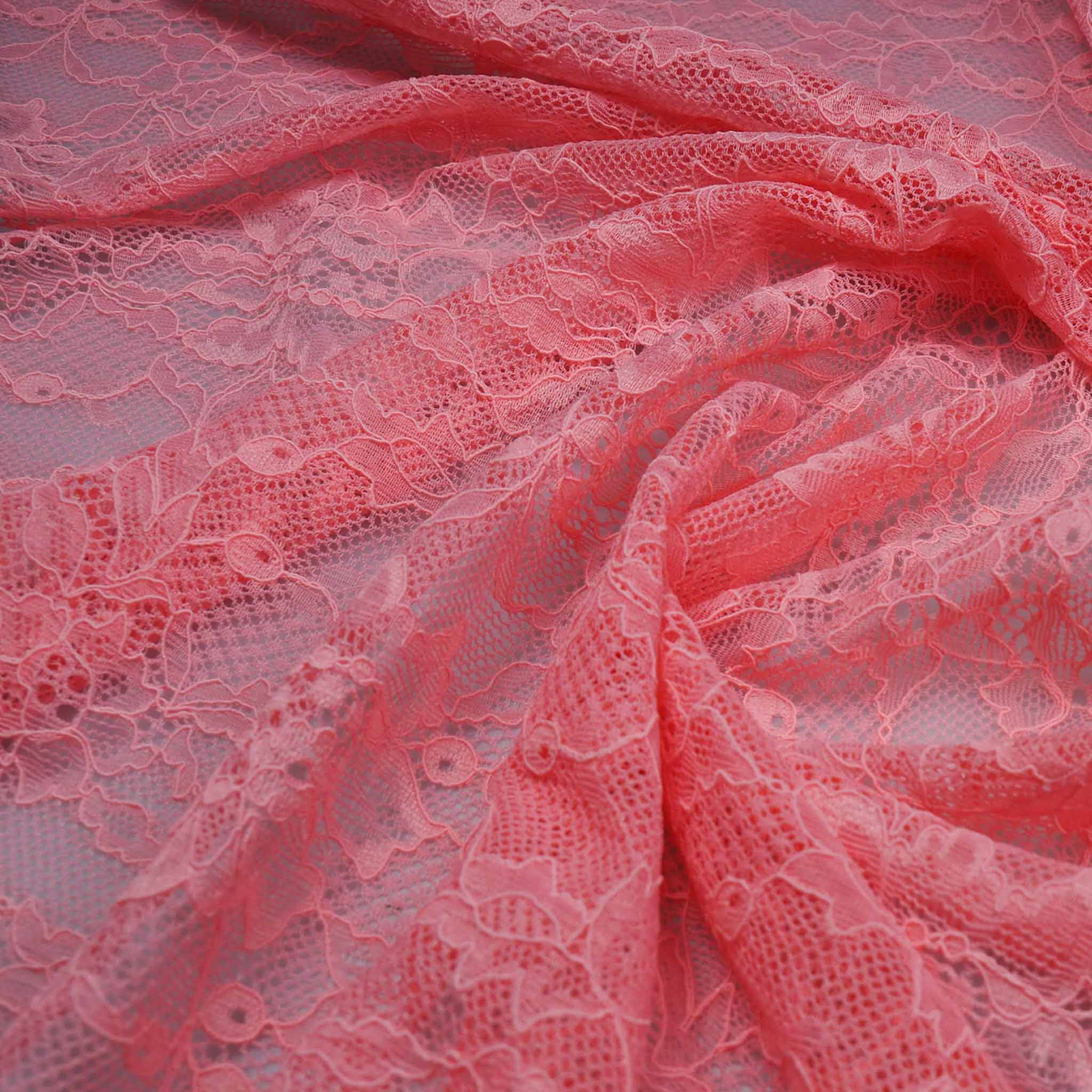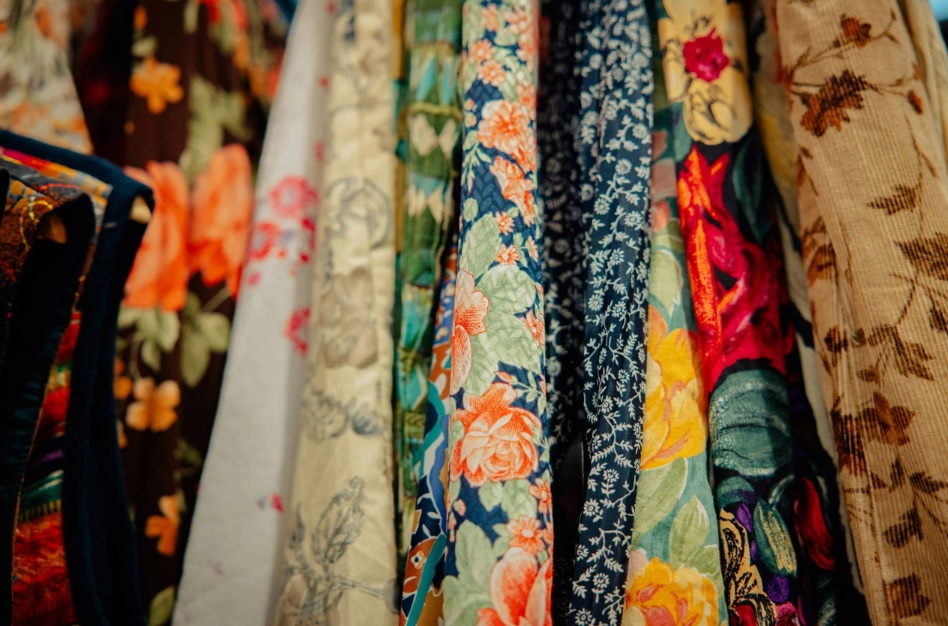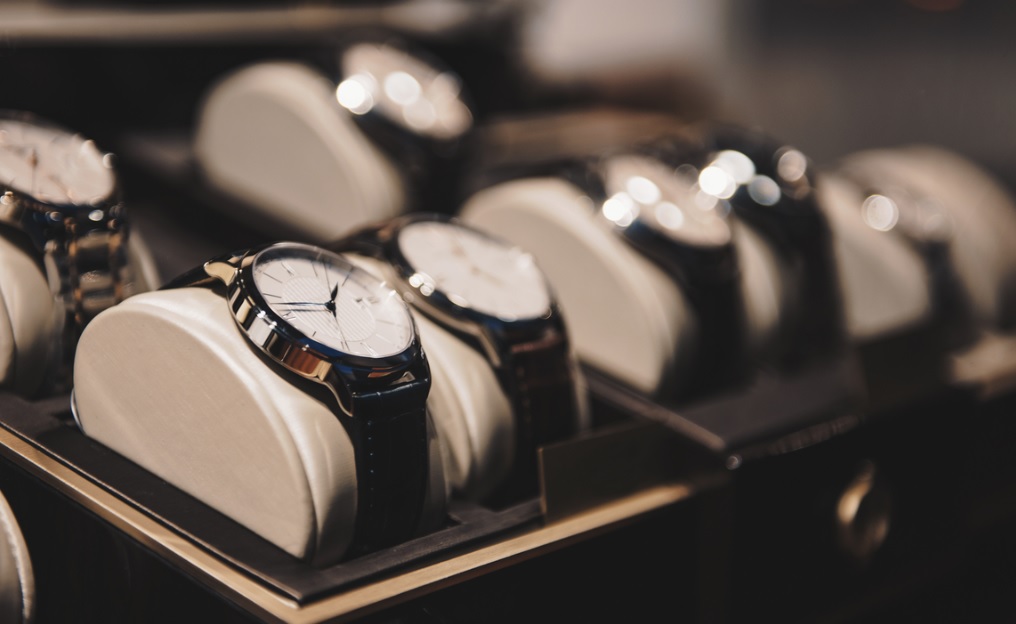FW

The second edition of Bharat Tex 2025 gears up to be a game-changer in the textile world. Organized by a consortium of Textile Export Promotion Councils (EPCs) and supported by the Ministry of Textiles (MoT), this mega event to be held between Feb 12-15, 2025 promises an unparalleled experience spanning the entire textile value chain, starting from fibre till the fashion sector.
Building on the success of the 2024 edition, Bharat Tex 2025 is meticulously planned and promises to be well ahead of schedule. This year's focus is on resilient global value chains and sustainable textile practices, reflecting the industry's evolving needs. Organizers anticipate a massive turnout, with over 5,000 exhibitors, 6,000+ international buyers from over 110 countries, and a staggering 120,000 visitors expected to grace the event.
A ‘Feature-Rich’experience awaits
Bharat Tex 2025 goes beyond a simple trade show. It's designed to be a comprehensive platform that fosters collaboration and knowledge sharing. Expect a plethora of activities, including a global trade fair, a dedicated textiles conference, informative seminars, CEO roundtable discussions, and valuable B2B and G2G meetings.
Witness strategic investment announcements, exciting product launches, and the formation of collaborative partnerships. Live demonstrations will showcase the latest advancements in textile technology, while cultural performances add a vibrant touch to the event.
Fashion takes the centrestage
Fashion enthusiasts are in for a treat. A dedicated Fashion Zone will feature designer and brand showcases, along with sustainability workshops and expert talks on industry challenges and trends. Visitors will be able to discover opportunities in India's thriving fashion retail sector at the dedicated "High Street" retail zone.

In the ever-evolving world of fashion, one trend is dominating the global landscape: the undeniable preference for casualwear. From the bustling streets of New York to the vibrant markets of Mumbai, people everywhere are embracing comfort and versatility in their everyday attire. This trend is not merely a passing fad but a fundamental change in how consumers express their style, with 'comfort' now a key consideration alongside aesthetics.
Trend forecasting, a casual future
Leading trend forecasting agencies unanimously predict the continued dominance of casualwear in the coming years. WGSN, a renowned fashion authority, points to the "casualization" of fashion, driven by factors such as the rise of remote work, the desire for sustainability, and a growing emphasis on self-expression.
The Future Laboratory further highlights the blurring of lines between formal and casual wear, with a growing demand for "hybrid" garments that can be dressed up or down. This trend reflects the evolving needs of the modern consumer, who seeks both comfort and style in their clothing choices. Fashion Snoops echoes this sentiment, foreseeing a continued focus on "cozycore" and "comfort dressing," with an emphasis on versatility and functionality.
Consumer trends driving the casualwear revolution
The casualwear boom can be attributed to several interconnected factors:
Remote work and hybrid lifestyles: The shift towards remote work has revolutionized wardrobes worldwide. Traditional work wear has taken a backseat, paving the way for comfortable yet presentable clothing options.
Emphasis on wellness: The pandemic has underscored the importance of physical and mental well-being. Consumers are gravitating towards clothing that supports an active and mindful lifestyle. Digital connectivity: The ubiquity of social media and video calls has increased the focus on personal appearance, even in casual settings. This has fueled the demand for stylish and versatile casualwear options.
Sustainability concerns: The growing awareness of the fashion industry's environmental impact has prompted many consumers to opt for durable, timeless pieces that transcend fleeting trends.
Emerging regional patterns
The US market is a major driver of the casualwear trend, with athleisure brands like Nike and Lululemon experiencing significant growth. American consumers are increasingly embracing a 'dressed-down' aesthetic, opting for comfortable yet stylish clothing that reflects their active lifestyles. European consumers too are also adopting casualwear, with Scandinavian minimalism and French nonchalance serving as inspiration. Sustainable and ethically produced clothing is gaining traction, particularly among younger generations.
In Asia, China, the casualwear market is booming, driven by a growing middle class with increased disposable income. Domestic brands are thriving, offering affordable and trendy casualwear that caters to the preferences of Chinese consumers. The Indian market is experiencing a similar shift towards casualwear, fueled by a growing youth population and the influence of global fashion trends. Traditional Indian clothing is also being reinterpreted in a more casual and contemporary context.
The global preference for casualwear highlights a fundamental shift in consumer behavior and fashion culture. This trend has got a boost from a desire for comfort, versatility, and sustainability, as well as a growing emphasis on self-expression. With forecasting agencies predicting continued growth of this trend, casualwear is poised to shape the future of fashion for years to come.

Asahi Kasei's premium stretch fiber, ROICA, is redefining performance and sustainability in the modern wardrobe. Recognized for its high-tech performance, ROICA combines quality, comfort, and responsible production, making it a key ingredient in a wide range of apparel, from sportswear to intimate wear. With the upcoming Interfiliere Paris, ROICA is set to showcase its partnership with leading companies in the textile industry, focusing on the FW 2025-26 season.
ROICA and its core partners: A focus on intimate wear
At Interfiliere Paris, ROICA will spotlight its collaborations with Iluna Group, Innova Fabrics, and Lauma Elastic, emphasizing their contributions to the intimate wear sector. These partnerships leverage ROICA's unique properties to enhance the performance and sustainability of their fabrics, aligning with the evolving demands of contemporary consumers.
Brugnoli, an Italian company specializing in circular knit fabrics, has been at the forefront of innovation for 70 years. Their product line includes fabrics that blend recycled polyamide with ROICA EF, resulting in lightweight and durable options suitable for underwear and swimwear. Among their innovations is the AMNI V550 Explosive fabric, crafted from biodegradable polyamide and ROICA V550. This bi-stretch material offers excellent muscle support, comfort, and UV protection, making it an ideal choice for activewear.
Cifra, renowned for its seamless garment manufacturing, utilizes ROICA V550 in its products to enhance fit and comfort while supporting sustainability. Their advanced warp knitting technology allows for the creation of intricate designs that cater to active lifestyles, ensuring that their garments not only perform well but also have a reduced environmental impact.
German lace manufacturer Dresdner Spitzen is known for its exquisite textiles, combining traditional craftsmanship with modern sustainability practices. The company’s latest collection, featuring ROICA V550, includes two standout articles: a stretchy elastic lace galloon and its matching allover design, both offering medium stretch and durability. These products are part of Dresdner Spitzen's commitment to sustainability, with certifications like GRS and STeP by Oeko-Tex guiding their production processes.
Innovative textiles for a sustainable future ROICA's
partnerships extend beyond the intimate wear sector, with companies like Iluna Group, Innova Fabrics, and Lauma Elastic leading the charge in sustainable textile innovation.
Iluna Group is celebrated for its expertise in creating fine fabrics for lingerie, blending craftsmanship with innovation. Their commitment to sustainability is evident in their use of eco-friendly materials and responsible production practices, positioning them as a leader in the intimate fabrics sector.
Innova Fabrics stands out for its ability to merge textile tradition with cutting-edge technology. Their innovative products, such as the I Love RF and Paris Special V550, are designed to minimize environmental impact, using materials like Sensil Biocare polyamide and Tencel combined with ROICA V550.
Lauma Elastic, a leader in textile and medical materials, showcases its commitment to innovation and environmental responsibility with products like fabric 323309. This fabric, made from Tencel and ROICA V550, is tailored for sports and yoga leggings, offering a combination of softness, durability, and sustainability.
Maglificio Ripa and Penn Italia: Leading the way in sustainable knits
Maglificio Ripa and Penn Italia, both renowned for their high-quality fabrics, are at the forefront of integrating sustainability into their production processes. Maglificio Ripa’s Eco 203AX Deep and Eco Latino S fabrics, made with Tencel and recycled yarns, are examples of how the company combines innovation with environmental consciousness. Penn Italia, known for its research and development, offers fabrics that incorporate post-consumer recycled polyamide and natural fibers, emphasizing eco-sustainability without compromising on quality.
Tessitura Colombo Antonio: Merging tradition with innovation
Tessitura Colombo Antonio, an Italian company specializing in high-quality fabrics, continues to innovate with products like JL7486-23, a refined elastic jacquard lace made with ROICA V550. This lace exemplifies the company’s ability to blend aesthetic appeal with functionality and environmental sustainability, making it ideal for both intimate and sportswear.
ROICA by Asahi Kasei continues to push the boundaries of what is possible in the textile industry. By partnering with some of the most innovative companies in the sector, ROICA is not only enhancing the performance and sustainability of modern apparel but also setting new standards for responsible production. The upcoming Interfiliere Paris event will be a key platform for showcasing these advancements, offering a glimpse into the future of high-performance, eco-conscious fashion.
Archroma, Kipaş Denim, and Jeanologia have teamed up to revolutionize denim production with the introduction of the Contra Denim concept. This innovative approach promises stunning, long-lasting distressed effects while significantly reducing environmental impact.
Contra Denim leverages Archroma's Denim Halo technology, which integrates Dirsol RD pre-treatment and advanced dyeing processes. This results in easy-wash, laser-friendly denim that minimizes water and energy use, reduces greenhouse gas emissions, and improves garment durability.
Jeanologia's laser marking technology enhances Contra Denim's vintage look, eliminating the need for harmful manual scraping and potassium permanganate sprays. This collaboration ensures that denim production is cleaner, safer, and more sustainable.
Kipaş Denim's ContraBlack collection, the first in the Contra line, achieved an Environmental Impact Measurement (EIM) score of 11, a dramatic improvement over the industry standard of 67, highlighting its low environmental footprint.
This partnership exemplifies how innovation and sustainability can coexist, enabling denim brands to deliver high-quality designs without compromising environmental goals.
Dondup, the iconic Italian designer denim brand, has joined forces with Bluesign, becoming the first major European denim company to enter the Bluesign System Partner network. This collaboration marks a significant step forward in Dondup’s commitment to sustainability, responsible production, and environmental leadership within the fashion industry.
Bluesign is renowned for its comprehensive approach to sustainable chemistry, focusing on environmental improvements, worker safety, and resource efficiency. As part of this partnership, Dondup joins Bluesign’s Denim Initiative, a global effort launched in March 2023 to revolutionize denim production. This initiative brings together leading denim brands and suppliers like Everlane, Reformation, Pure Denim, and ISKO, all dedicated to clean chemistry and sustainable practices.
Matteo Anchisi, CEO of Dondup, highlights the brand’s strong commitment to reducing its environmental footprint. By partnering with Bluesign, Dondup is advancing its mission to create denim that is not only stylish but also environmentally friendly and socially responsible. This collaboration positions Dondup as a leader in the fashion industry, setting new standards for transparency and accountability.
This partnership is expected to create a ripple effect throughout the fashion industry, inspiring suppliers, manufacturers, and raw material providers to adopt similar environmental and social standards. As Dondup implements Bluesign’s clean chemistry practices across its supply chain, the broader industry is likely to follow, driving significant advancements in sustainability.
Dondup’s collaboration with Bluesign positions the brand as a leader in the global movement towards sustainable fashion.
India’s textile industry will grow to $350 billion by 2030 and add 3.5 crore jobs, stated Giriraj Singh, Union Minister of Textiles at the Curtain Raiser event of ‘Bharat Tex 2025’ in New Delhi. He hoped, the event will boost India’s image on the world stage and help it to be recognised by its ‘Bharat’ brand and green sustainable textile products.
Further Singh affirmed,the Union Government’s PLI scheme for textiles will enable the apparel industry to boost production and promote their branding. The scheme will enable linking of the textile value chain and lure FDI in the country, he added.
Emphasising on the role of the Indian demographic dividend in aiding India’s growth ahead of China, Singh urged state governments to participate in the event.
A global textiles event organised by a consortium of Textile Export Promotion Councils (EPCs) and supported by the Ministry of Textiles, Bharat Tex 2025 is scheduled to be held from Feb 14-17, 2025 at two state-of-the-art venues, of Bharat Mandapam, New Delhi and India Expo Centre and Mart, Greater Noida.
The main event will be held from Feb 14-17, 2025 at the Bharat Mandapam and will cover the entire value chain of textiles. On the other hand exhibitions pertaining to handicrafts, garment machinery, ethnic apparel will be held from Feb 12-15, 2025 at the India Expo Centre and Mart, Greater Noida.
Built around the twin themes of resilient global value chains and textile sustainability, Bharat Tex 2025will be more vibrant and attractive than the first edition, attracting top policymakers, global CEOs, international exhibitors and global buyers.
Spanning 200,000 square meters, the event will host over 5,000 Exhibitors, 6,000 international buyers from over 110 countries and over 1, 20,000 visitors are expected to participate in this year’s event. Around 100 international speakers are also scheduled to participate in the event.
The Bharat Tex exhibition will feature Apparel, Home Furnishings, Floor Coverings, Fibers, Yarns, Threads, Fabrics, Carpets, Silk, Textiles based Handicrafts, Technical Textiles and many more. It will also host a retail high street focusing on the opportunities in India’s fashion retail market. Besides, exhibitions on handicrafts and apparel machinery, the expo will host displays of ethnic wear at the India Expo Centre and Mart, Greater Noida.
The textile extravaganza will offer a range of activities including a global sized trade fair and expo, a global scale textiles conference, seminars, CEO roundtables, and B2B and G2G meetings. It will also feature strategic investment announcements, product launches, and collaborations poised to reshape the global textile industry. Additionally, attendees can benefit from the live demonstrations, cultural events, and fashion presentations, designer and brand exhibitions and sustainability workshops, and expert talks.
The curtain raiser event for Bharat Tex 2025 attracted a distinguished gathering of industry associations, textile sector leaders, and senior officials from various ministries.
Causing an alarm in the textile industry, cotton production plummeted by up to 60 per cent in the Punjab and Sindh regions of Pakistan by Aug 31. The industry now needs to import lint from foreign markets, straining the country’s foreign exchange reserves.
A discrepancy of over 0.3 million bales between the figures released by Punjab’s Crop Reporting Service (CRS) and the Pakistan Cotton Ginners Association (PCGA) is adding to the confusion surrounding future procurement strategies. According to the PCGA, around 1.226 million bales arrived at the ginning factories by the end of August, a sharp decline from 3.04 million bales during the same period last year.
The shortfall is linked to various issues, including delayed sowing, prolonged heatwaves, heavy August rains, pest infestations, reduced crop acreage, and market manipulation. The absence of an intervention price and declining profitability further compounded the situation, alongside insufficient government support for research and development (R&D).
Cotton production in Sindh declined by 61 per cent, with the state producing only 0.773 million bales compared to 1.972 million bales last year. Production in Punjab declined by 58 per centto just 0.453 million bales compared to 1.068 million in 2022. However, the CRS in Punjab claims the province harvested 0.759 million bales, about 30 per cent less than last year’s output. Dr. Abdul Qayyum, Director-General, CRS attributes this discrepancy to his agency’s calculation methods based on boll size and picking ratios.
Sajid Mahmood, Head-Technology Transfer Department, Central Cotton Research Institute, points out, a lack of R&D funding for developing climate-resilient cotton varieties is a key reason for the ongoing decline in cotton output since 2016. The absence of support from the textile industry and the government for the Pakistan Central Cotton Committee has stifled R&D efforts, further impacting the industry, he adds.
A few experts in the ginning sector attribute the current drop in cotton production to the under-invoicing and undocumented business, driven by heavy taxation. In response to quality and quantity issues, textile mills have increasingly turned to imports, purchasing 1.171 million bales so far as against 2.615 million last year. They are also negotiating for additional imports, with deals for 1.6 million bales being reportedly signed.
North Carolina-based startup, Keel Labs has teamed up with eco-conscious California brand Outer known for the first commercial launch of Kelsun, a seaweed-based fiber. This collaboration reflects both companies' shared commitment to ocean sustainability and responsible fashion.
Co-founded by pro surfer Kelly Slater and designer John Moore, Outer known is known for launching the popular Blanket Shirt in 2016, celebrated for its sustainable design and vintage softness. Made from an organic cotton and Kelsun yarn blend, the latest version of this shirt retains the comfort of the original while incorporating innovative, eco-friendly materials.
Designed as a sustainable alternative to traditional textile fibers, Kelsun is 100 per cent bio based and biodegradable. It is made from over 75 per cent seaweed biopolymer, and decomposes naturally in about 60 days. Keel Labs ensures that their seaweed is sourced responsibly, following sustainability guidelines and local harvesting practices.
Tessa Callaghan, Co-founder and CEO, Keel Labs, affirms, the company’s partnership with Outer known is dedicated to sustainability and the ocean. It aims to create environmentally friendly products from ocean resources.

In an era where sustainability is paramount, Circ the new innovative fiber from Danville, Virginia-based company stands out as a game-changer in the fashion industry's quest for eco-friendly materials. Unlike traditional recycling methods that often degrade material quality, Circ's technology preserves the integrity of fibers through a meticulous process combining hydrothermal and chemical treatments. This innovative approach gently breaks down fabric blends into pure cellulose and polyester components, which are then transformed into high-quality recycled pulp suitable for textile production. “Circ's technology represents a significant breakthrough in textile recycling. Their ability to transform discarded textiles into high-quality fibers is a game-changer for the fashion industry," says Professor Rachel McQueen, Textile Science, University of Alberta.
Unique properties and applications
Experts point out, Circ's technology is a game-changer for the textile industry. It addresses the critical issue of textile waste and offers a pathway to a more circular economy. Circ fiber boasts of properties that make it a compelling alternative to conventional textiles like cotton and polyester. Beyond its inherent sustainability, reducing reliance on virgin materials and minimizing environmental impact, Circ fiber offers softness, durability, and excellent moisture-wicking capabilities. Its versatility allows seamless blending with other fibers, enabling a wide range of design possibilities across various applications.
Commercial success and industry adoption
Major fashion brands are embracing Circ's innovation as a cornerstone of their sustainability strategies. Leaders like Patagonia, H&M, Levi's, and Zara have partnered with Circ to integrate recycled fibers into their product lines. This collaboration underscores a growing industry demand for sustainable textiles and highlights Circ's potential to transform manufacturing practices across apparel, home textiles, automotive interiors, and medical products.
• Patagonia incorporates Circ's recycled cotton fibers in their latest T-shirt collection, showcasing high-quality apparel with minimal environmental impact.
• H&M features Circ's recycled polyester fibers in their Conscious Collection, aligning with their commitment to sustainable fashion and customer preferences.
• Levi's explores Circ fibers for more sustainable and durable denim products.
• Zara utilizes Circ to offer stylish, eco-conscious clothing options to a broad audience.
Circ's technology holds immense promise for the future of the fashion and textile industries. As brands increasingly prioritize sustainability, the demand for innovative solutions like Circ fiber is expected to grow exponentially. With continued research and development, Circ aims to further refine its process and expand its applications, contributing to a more circular and responsible industry.
With its pioneering technology, Circ is poised to revolutionize the fashion industry by promoting circularity and producing superior recycled fibers. As consumer demand for sustainable textiles continues to rise, Circ's innovative approach ensures it will play a pivotal role in shaping a more responsible and eco-conscious future for fashion.

US luxury spending saw a significant downturn in July, reveals Citi Research's latest findings. Spending on luxury goods dropped by 11 per cent compared to the same month last year, marking another month of declining demand. This decline, based on data from 10 million credit card holders, follows a 7 per cent dip in June, suggesting a sustained softening in the luxury market.
The report highlighted a particular weakness in luxury leather goods and ready-to-wear categories. However, bucking the overall trend, the watch category saw an unexpected surge in demand, pointing to a potential shift in consumer preferences or spending patterns within the luxury sector.
Key findings
Spending growth slows: Year-over-year spending growth in the US luxury market decelerated to 5 per cent in July 2024, compared to 8 per cent in June and 10 per cent in May.
Shift towards value: Consumers are becoming more selective in their luxury purchases, prioritizing items that offer long-term value and durability.
Experiences gain traction: Spending on luxury experiences, such as travel and fine dining, continued to outpace spending on goods.
Table: US luxury market spending growth
|
Month |
Year-on-year growth |
|
May 2024 |
10% |
|
June 2024 |
8% |
|
July 2024 |
5% |
The rise of ‘quiet luxury’
The report highlighted the growing trend of ‘quiet luxury’, where consumers are opting for understated, high-quality items over flashy logos and conspicuous consumption. This shift is driven by a desire for authenticity and individuality in luxury purchases. In fact, the decline in traditional luxury categories like leather goods and ready-to-wear could be attributed to the rise of 'quiet luxury.' This trend favours understated, high-quality items over flashy logos and conspicuous consumption. Consumers are increasingly seeking value and longevity in their purchases, which may explain the growing interest in luxury watches, known for their craftsmanship and enduring appeal.
Analysts say, the July data confirms a sustained weakening in US luxury spending. While the overall picture is concerning, the growth in the watch category suggests that consumers are still willing to spend on luxury items that offer enduring value and quality.
Overall, the US luxury market is facing headwinds from multiple directions. Economic uncertainty, rising interest rates, and shifting consumer priorities are all contributing to the current downturn. However, the resilience of certain categories, like watches, offers a glimmer of hope. As consumer preferences continue to evolve, luxury brands that can adapt to these changes and offer products that resonate with the new 'quiet luxury' ethos may be best positioned to weather the current storm.












